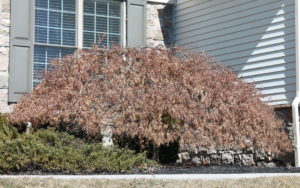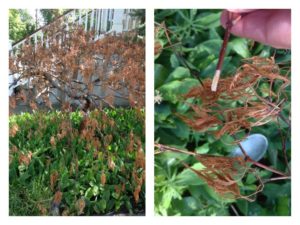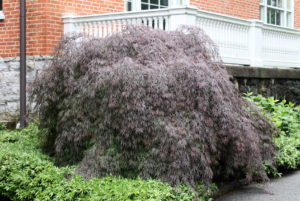Why So Many Japanese Maples Are Dying
July 21st, 2020
Japanese maples have never been one of the easier plants to grow.
The coveted cut-leaf types are especially finicky with their thin leaves and low tolerance for lousy soil and less-than-ideal sites.
But this season, and really the past two years, have been particularly troublesome to this widely planted specimen small tree.
I’m hearing widespread reports from gardeners all over who either are worried by struggling Japanese maples with lots of dead branches or dead trees altogether.
Gardeners are especially concerned because Japanese maples are so slow-growing and therefore so expensive.
Unfortunately, the three main explanations for the glut of maple mayhem are largely out of our control. All are related to erratic weather.
No. 1 goes back to the past two growing seasons, when we’ve had some record-setting rain dumpings. Those caused soggy conditions in poorly drained planting sites.
Since Japanese maples aren’t fans of “wet feet,” it doesn’t take long for roots to start rotting in wet clay. Maples also are prone to several root-rotting diseases, which are encouraged in wet weather.
With compromised root systems, that sets trees up for potentially fatal problems when other stresses come along.
Cause No. 2 is one of those other stresses. We had an extended warm spell in early fall, followed by a sudden nosedive into freezing territory.

This weeping Japanese maple never turned color in fall. The leaves went from in-season red to brown and hung on most of winter.
The problem with that is it shocks branches that haven’t yet fully prepared for winter cold. The most obvious result is trees whose leaves go from growing-season color directly to brown and then hang on.
That happens when leaves aren’t able to go through the normal progression of gradually shutting down chlorophyll, then turning color, then “pushing” off the leaves by sealing off where the leaves attach to the stems (a process called “abscission”).
With unsealed leaf attachments, trees can lose additional moisture over winter, which can kill roots.
That’s happened in three of the past four falls, thanks to our increasingly wacky weather in a changing climate.
Cause No. 3 was the real finishing blow.
We had an unusually warm late winter that “faked” a lot of trees and shrubs into thinking spring already had arrived. They pushed their leaf buds sooner than they should’ve, exposing that tender growth to another temperature nosedive in early spring.
A lot of plants can withstand that and simply grow a new set of leaves, ultimately going on their merry way when “real spring” shows up. That’s assuming they haven’t already been severely compromised by something else.
In the case of my second-year red, weeping, cut-leaf Japanese maple, it survived the first cold snap and started to regrow new shoots after the first set froze.
Then the temperatures suddenly dipped below freezing again in May, killing the second set. That was it.
I suspect this three-strikes-and-you’re-out combination is what has killed so many Japanese maples and not any one thing.
There’s not much you can do about it now. In fact, there’s really not that much you can do even ahead of time, other than maybe shield at-risk trees by wrapping them in burlap before a sudden spring freeze.
It helps to be as nice as possible to picky trees like Japanese maples by keeping them damp in dry spells, avoiding harmful practices like too-deep planting, poor pruning and over-mulching, and above all else, giving them an ideal site in the first place (morning sun/afternoon shade, loose, well drained soil, and wind protection).
But with pristine care and siting, it’s still hard to overcome triple weather whammies.
If you want to read more about the many other things that can weaken and kill Japanese maples (verticillium wilt, borers, cankers, scale, phytophthora root-rot disease, etc.), read my 2016 post on “What’s Killing the Japanese Maples?” That post has numerous comments, too, that will let you see what other gardeners have been experiencing.
If you want to read more about abscission and why trees sometimes don’t drop their leaves heading into winter, check out my 2017 PennLive post on that.
And if you’re looking at replacing a dead Japanese maple, check out my list of Top 10 Small Trees.









